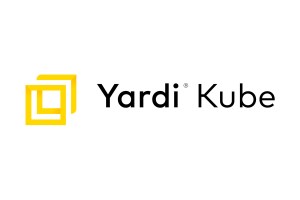How will Hybrid Offices Affect Technology Requirements?
In their series of blogs, Tim Devitt from GCUC UK discusses with Justin Harley, regional director at Yardi what impact, if any, the expected change in the way we use the office impacts on technology requirements.
Tim – Will the shift in how we use the office following the pandemic impact technology requirements?
Justin – The pandemic has promoted the importance of technology within flexible workspaces. Working practices have changed for good and operators must ensure they have the infrastructure to support the demands of the customer.
The need for excellent technology has always been there and I think what the pandemic has done is emphasised that need with a focus on access control, Wi-Fi and bandwidth management, building and facilities management and easy-to-use management software with an integrated member app.
For me, it has highlighted the need to manage, monitor and check facilities closer than ever and it’s become a primary requirement when running a flex space. Many spaces used to operate from excel spreadsheets, but today’s tenant wants to know that their common areas are being checked and cleaned frequently, which is where better technology is required.
How do you monitor these checks across multiple buildings and ensure the inspections are happening regularly? You provide your teams with an easy-to-use app that monitors inspections and links back to a database of all your spaces and facilities. Your tenants can raise maintenance requests through the app, and you can set up alerts for when routine maintenance checks are required for both internal and external teams. You can also include a service level agreement to show how you are performing – going forward, more occupiers and tenants will expect this service as part of their licence.
Tim – You mentioned that the technology capability has always been there, which aspect will be under the most pressure when people return to their flexible workspaces?
Justin – The key pinch point, which we’ve already seen happen, is the use of bandwidth. As people have started to return to work, the bandwidth requirement has increased exponentially. This has been driven by video calls on Teams and Zoom for both internal and external discussions (whether colleagues are at home or in the office), and the bandwidth demand is up to 30 times greater than a simple audio call.
The following table shows how much more bandwidth is used versus a traditional audio call and it’s essential that there is the capacity to cope with the change.
Tim – How does an Operator optimise bandwidth to meet the different needs of their clients?

Justin – It’s not just a case of ramping up and adding more bandwidth, that’s not actually the answer, the solution is being able to better manage the bandwidth you have and utilising an infrastructure to support the bandwidth and provide world-class Wi-Fi in your building.
Technology is moving quickly, and operators need to invest in Wi-Fi as a service because it can move with the times. Traditionally, businesses would purchase hardware but nowadays it can quickly become outdated and obsolete, resulting in higher costs. By subscribing to a service that keeps you upgraded and current will mean members get a better experience.
Wi-Fi as a service provides you with better data and allows you to have more control over your Wi-Fi. Just remember, the more hardware and Wi-Fi networks you have in the building, the greater chance the quality of your Wi-Fi will reduce as network interference can occur.
Tim – When visiting various flexible office spaces recently, I’m hearing that the communal lounge areas are becoming more heavily used and in demand than pre Covid. How do operators service this increased demand effectively?
Justin – That’s an interesting point and something we have come across too as companies are taking offices in flexible spaces and using the communal lounge area as a drop-in point and are subsequently negotiating more access cards than desks.
Your access control system needs to be a focus as that’s how you know how many cards you’ve issued, if you’re charging for all the cards, and if everyone has access to the right areas. This information is vital to both the operator and the customer to understand how spaces are used and utilised.
Recently we saw an example of a client who has an existing contract with an operator for 20 desks and 30 passes. They’re planning to go back to the office from 1st September, but they need to increase the number of passes they have. The operator didn’t know how many passes had been issued or to whom and guessed 20 based on the number of desks. Furthermore, the operator was going to charge an additional fee for any passes above that. What’s alarming about this story is that there is no record in the contract and no record of who is using the passes as neither the access system nor the core system is connected.
By using interconnected systems with accurate data, you can make better informed decisions. This data can provide insight into space usage and how it may change going forward such as where a company may normally opt for a 10-person office but require scope for a flexible workforce of +/-30 people.
Tim – In addition to more people using the communal space, what impact will “Surge Demand” have? (a term John Williams from the Instant Group used in the GCUC podcast – where people will only return to the office between Tuesday to Thursday).
Justin – I think “Surge Demand” is a great phrase and demonstrates how operators will need to be able to understand the usage of their space, who’s in the building and what services they’re using e.g., Wi-Fi, conference facilities or meeting room usage, and does it align with their contract, then they can establish appropriate fees.
On the assumption operators have up to date infrastructure, accurate and reliable data from their access control, bandwidth and room booking so they can analyse the change in usage patterns, the technology should be able to cope with this shift in working pattern.
It’s never going to be perfect, but it will give you a good barometer of trends through the reporting system. Having a 360-degree view of customer activity is critical in addition to full integration with the accounting system.
Flex space operators need to invest in connected systems that provide enhanced data, easier communication, automation and more. You need a scalable system that is flexible and can handle the new ways of working, including Wi-Fi as a service that allows you to quickly respond to members’ bandwidth needs.
Your tenants expect a safe and clean environment, and with more people opting for a hybrid way of working, access control needs to be linked to your management software, so you know how many people are in your building and who has access going forward.




